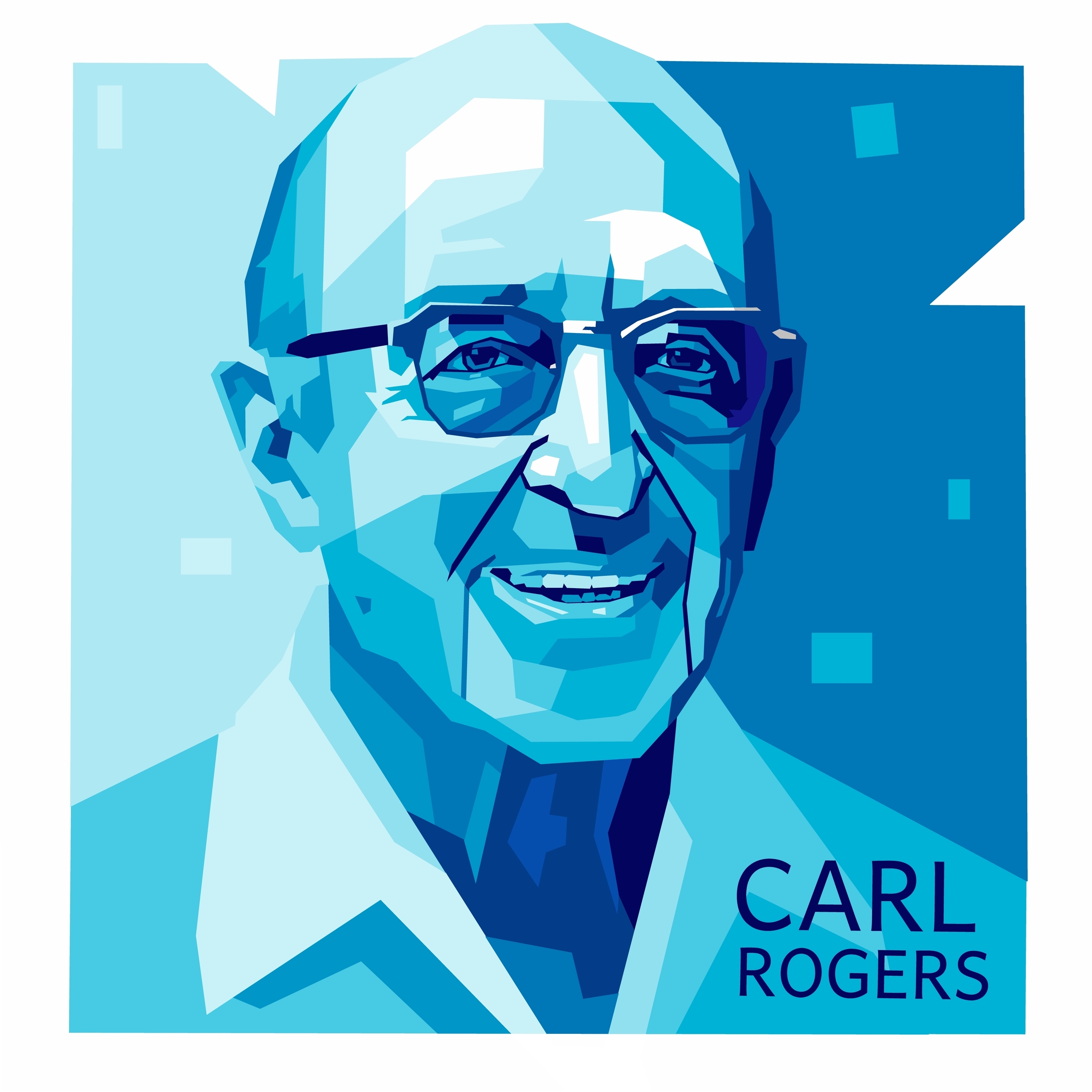Ask a group of people to name a famous psychotherapist, and most would probably say Sigmund Freud or perhaps Carl Jung. But, one of the most influential psychotherapists of the 20th century was Carl Rogers.
In the 1940s, Rogers developed a radical approach to psychotherapy called “person-centered therapy,” a therapeutic technique in which the therapist uses empathy, reflective listening, and profound acceptance — rather than interpreting behaviors or exploring unconscious drives — to help the client find their own way to self-actualization.
How Carl Rogers Transformed Psychotherapy
At the time Rogers developed his theories, the basic approach to psychotherapy was very authoritarian, says Dominic Cirincione, a psychotherapist who was a friend and colleague of Rogers during the 60s and 70s. “Freud would interpret your dreams — and then tell you about yourself. Jung was a little more generous in that he helped people explore their dreams more, but still, he was very interpretive.”
Then there was the stimulus-response approach. With this behavioral method, people were treated as mechanisms to be manipulated. All of these approaches, Cirincione says, were built primarily on the medical model: The patient is sick and needs to be “fixed,” and the therapist was the fixer.
Rogers rebelled against all of this. Influenced by Abraham Maslow, Viktor Frankl, and Rollo May, Rogers believed that people could create their own meaning in their lives and that health is restored when people speak in their true voices from inside themselves — not when an expert on the outside interprets their lives for them, Cirincione explains.
Listening rather than talking is key to Rogers’ approach. When Cirincione first began studying the person-centered approach, he became aware that people talk at each other rather than with each other. They don’t really listen; they just wait for the other person to finish so they can talk, he says. “They don’t hear each other. Yet the need to be heard is critical to us as human beings. Learning to really listen to each other is a wonderful undertaking for us as therapists and persons.”
Read More: Top 5 Psychology Theories from Sigmund Freud
Rogers’ Views on Person-Centered Therapy
Rogers’ book On Becoming a Person: A Therapist’s View of Psychotherapy, published in 1961, detailed his philosophy and approach, and inspired a generation of therapists. The time was right for this message. In the 1960s, people were questioning authority and seeking new ways to understand themselves and the world. “The cultural revolution going on at that time was really ripe for what Carl had to say,” says Cirincione.
In 1968, Rogers, Cirincione, Anthony “Tony” Rose, and a few likeminded friends formed the Center for Studies of the Person, a still-active organization that hosts events, conferences, and workshops for people for whom the person-centered approach plays an important role in their personal and professional lives.
Rogers’ methods were popular for many years — and still are. In the United States, however, current payment models make it difficult for therapists to use the approach. This kind of therapy takes time, and most insurers will pay for only a few sessions. Instead of psychotherapy, people turn to prescription medicines, such as antidepressants and anti-anxiety drugs. Still, many therapists use the approach with patients who can pay out of pocket when their insurance stops paying. Some therapists work on sliding fee scales to help make the therapy available to more people.
Read More: These 5 Remedies to Calm Anxiety can Help Manage Symptoms
Continuing the Legacy of Carl Rogers
In his last couple of decades, Rogers used his methods to address political oppression and social conflict. He traveled to Africa, Northern Ireland, South Africa, Brazil, and the Soviet Union to help people learn to communicate better to bring about social change.
Though Rogers died in 1987, the work of taking the approach beyond the couch is still going on. Tony Rose, psychotherapist and one of the founders of the Center for Studies of the Person, has spent the last four decades applying person-centered principles in support of Indigenous community-based conservation of critical ecosystems and biomes around the world. He applies what he has coined “all-inclusive positivity” not only to individuals but also to ecosystems and species.
Person-centered therapy was radical in the 1940s, an idea whose time had come in the 1960s. Now, in the 21st century, as it expands the concept of “person” beyond the individual to embrace all of nature, it has become radical once again.
Read More: What Can You Do With A Psychology Degree?
Article Sources
Our writers at Discovermagazine.com use peer-reviewed studies and high-quality sources for our articles, and our editors review for scientific accuracy and editorial standards. Review the sources used below for this article:
Avery Hurt is a freelance science journalist. In addition to writing for Discover, she writes regularly for a variety of outlets, both print and online, including National Geographic, Science News Explores, Medscape, and WebMD. She’s the author of “Bullet With Your Name on It: What You Will Probably Die From and What You Can Do About It,” Clerisy Press 2007, as well as several books for young readers. Avery got her start in journalism while attending university, writing for the school newspaper and editing the student non-fiction magazine. Though she writes about all areas of science, she is particularly interested in neuroscience, the science of consciousness, and AI–interests she developed while earning a degree in philosophy.





















Discussion about this post